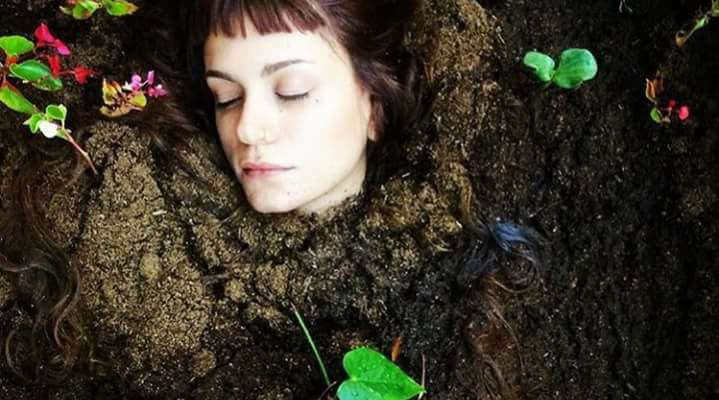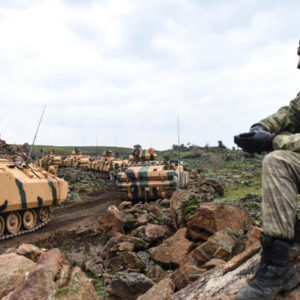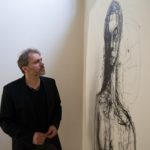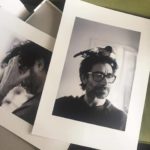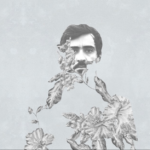Mirella Salameh, aka ella is a unique artist whose work was acclaimed for its powerful, yet fragile intimacy, where the nurture concept is very present and palpable, as it gently takes us back to a foetus position, where humans nurture each other as nature sheds its protection. ella‘s characters are healers, as they plant generous seeds of empathy and growth in each other’s wounds, they are an ode to mother nature and act as a mirror showing Mirella’s true soul. The Lebanese artist won several awards for her work. Among them, the first edition of the Prix-d’Excellence award from the University of Applied Sciences and Arts (HES.SO), Switzerland, and the installation prize in “age of wood” at MACAM, Modern and Contemporary Art Museum, Lebanon. She opens up to the New Eastern Politics; Arts and Culture contributor, Christiane Waked and invites her to discover what’s on ella’s planet.
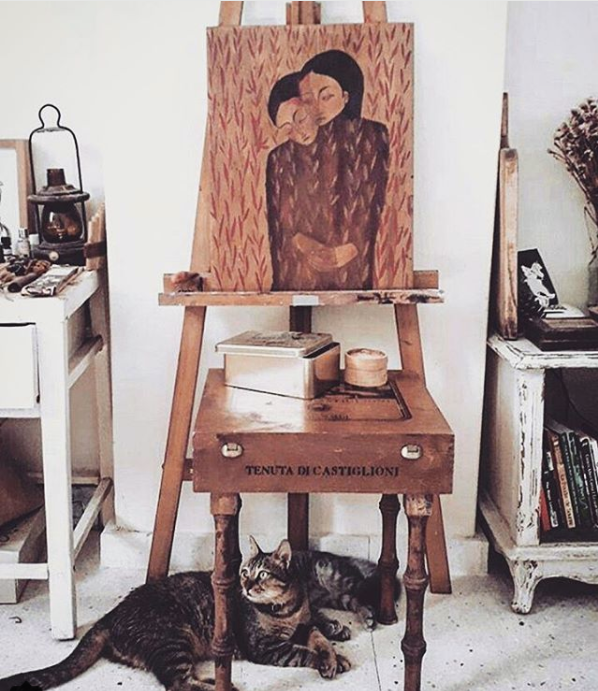
C.W: Introduce us to Ella’s planet.
M.S: “ellazplanet” was actually a randomly picked name for the virtual representation of my artwork, which became a name for my studio. At “ellazplanet”, I recycle and up-cycle some material and non-material to create my pieces.
C.W: Where does this passion for art come from? How did your studies in “Art in the public sphere” in Switzerland help better your techniques?
M.S: My passion for art came by nature; I never decided to become an artist, it was rather within me ever I came to life, effortlessly, like one breathes. I never learned any painting technique anywhere actually. My masters, which I’m forever grateful for since they were possible thanks to a full grant I had won, actually didn’t directly help my technique, but they did, big time, help me with the procedure, method, way of thinking, choice, etc.
C.W: Is your art feminine or rather feminist? Can you in few words describe to us that aura that you covered all your women in your paintings with?
M.S: I understand how my artwork could be read as feminist, because of the recurrent female representations especially in my drawings and paintings, and the themes around. However, what I feel I would like to convey, is the embodiment of Mother Nature, in relation to the human being, and because I’m a woman, I feel I effortlessly draw or paint a woman, who is my alter ego, and who is a subject that is closer to me than anything else.
The aura is one I sense and “see”, around animals, plants, and sometimes humans, which conveys the soul, the vibrations around a subject. It is yet another element which brings my subject closer to the divine Gaîa.
Now a woman’s struggle is undeniable, of course, and that depends so much on the region she lives in on this globe. However, I have my own vision and thoughts on feminism, and I often strongly disagree with the equality women ask in regard to men.
A woman should only compare her equality, resilience, and strength to her own self and experience, and not to me
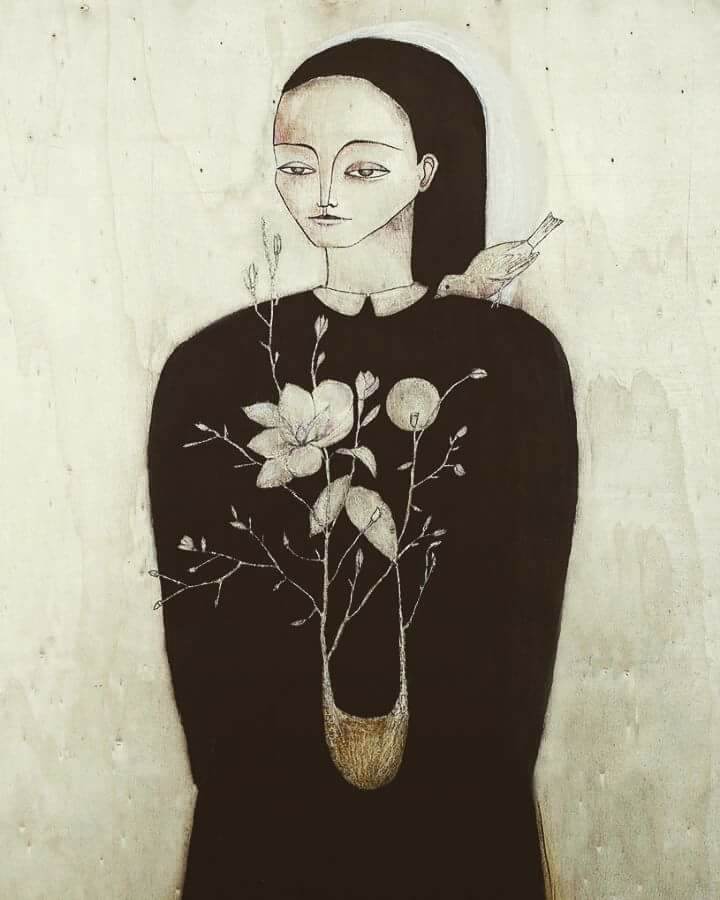
n, she is beyond that. Not that I am demeaning men, not at all, men are men, and women are women, and then, there is the third sex, just like there are bees, flowers, snails, and trees and it’s all unique and it’s all natural. Women should surely have their independence, their rights, goes without saying, and I would add, follow their own passion, their own unique inner voice. But perhaps also, it’s about time women come back to their essential sensitivity and connectivity to our ancestors, to self-sufficiency (as much as possible), to listening and supporting each other, rather than be in competition, to rewild, to reclaim, to tend the earth, to maybe create craft and food, to heal, etc. What we need, as women today, to fight against, is the capitalist system, a consumerist culture in which we are told how we should look, how we should dress, who we should follow, how to please, what we must and what we mustn’t do, and I think that’s all bullshit and that’s all a waste of a woman’s time. I find that women nowadays are losing much of their essence because first, they are following shallow stereotypes of famous women in nowadays pop culture, and second, because they are comparing themselves to a model of a man who is actually a pitiful one: one who has barely time for himself, one who is actually working for the system to make a successful career weighed by the amount of money he makes and not by his passion. Not to mention, often contributing the big lie. Be it, man or woman, a higher purpose is there for us to fulfill, something that brings us, humans, closer to our own nature, closer to each other, and which brings us again in harmony with the whole, and eventually closer to peace with oneself and the others, and the planet.
C.W: There is a tragic element in most of your paintings, are you another sad and tortured artist?
M.S: It is one of the biggest misconceptions to find my work in general tragic unless it is the intention of the work. I am not a sad or tortured artist, quite on the contrary, but I understand that sometimes, being a channel, the subject I convey might be tragic.
C.W: In your auto-portraits, we feel the influence of Frida Kahlo, who else inspires you in your art?
M.S: Frida Kahlo actually never initially influenced me, and it was after I have been told that I might have some of her visions, that I found myself being interested in her work, her life, but I don’t feel a conscious nor an unconscious influence or inspiration, especially that at the debut of my artwork, believe it or not, I had no idea who Frida Kahlo was, though I do now, appreciate her work a lot, who wouldn’t? I was rather so touched by Amedeo Modigliani, around ten years ago.
I have little influence from other, say, “well known” artists; my inspiration is from my encounters and my journey. Sometimes it’s an experience (could be a collective one), a book, a story, a loss, a dream, a piece of music, a special encounter, or even, something rather considered as banal, like the color and shape of a fruit.
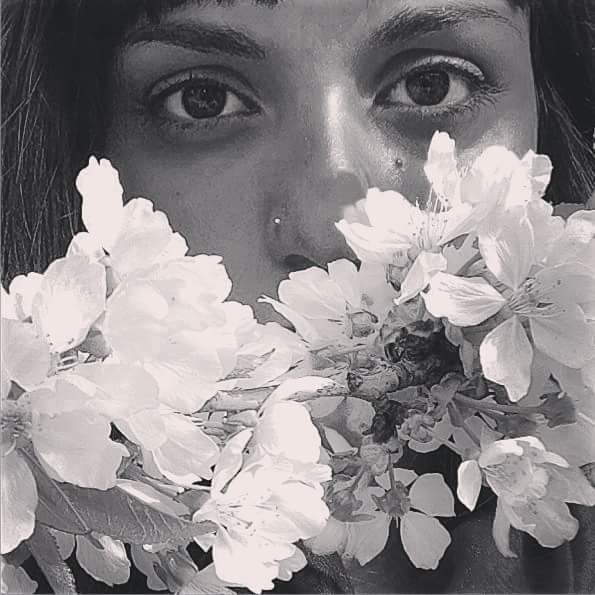
C.W: You use natural ingredients like henna, turmeric, earth, wood in your paintings, sculptures and performance, how much nature influence the process of your creativity?
M.S: Aha. it would be such a contradiction if I don’t opt for natural or consciously sourced elements when coming to the “ingredients” of my work when my main topics are nature and time. On one side, what more can convey the feel than elements of nature itself when Nature is the subject? and on the other hand, I think it’s from the ethical responsibility of an artist to be aware of her or his choices and their impact (politically, economically, and environmentally) on life and earth.
An artwork is not just about its result; the process is one very important intrinsic part, like an organ that beats throughout the work.
C.W: I loved your performance at the French Institute Beirut where you buried yourself in a flower bed and people watered you. What was the message that you wanted to transmit to the public?
M.S: “Sehnsucht”, consisting of natural elements (soil, sprouts, plants and flowers, water), my presence and the participation of the viewer, tries to convey a representation of the endangerment of nature today, together with the endangerment of a human being’s connection to it, it’s a representation of life (fertile soul, seeds, sprouts, watering, a woman’s womb), but also has a connotation to death, again earth as the ingredient of a human body and which one eventually decomposes and returns to, as we are recycled by nature, thus the performance tries to remind that Human being is part of Nature and not apart from it, expressing vulnerability, fertility, resilience, and rebirth. The visitors would water the soil/”me” if they wish, and to each watering, I’d react with a deep breath while opening my eyes. The various plants were also placed above specific points on my body, namely: over the womb, a bloody red, blooming flower, over the heart, a heart-shaped ivy with some cut “veins”… What I can briefly add is that involving the viewer is also an invitation to reclaim time, and furthermore to give life again to nature/earth/the mother.
The title, “Sehnsucht”, doesn’t really have an accurate translation in English, but the closest would be “nostalgia or longing to a home that cannot really be reached”… in this sense this piece is both a mourning and a celebration.
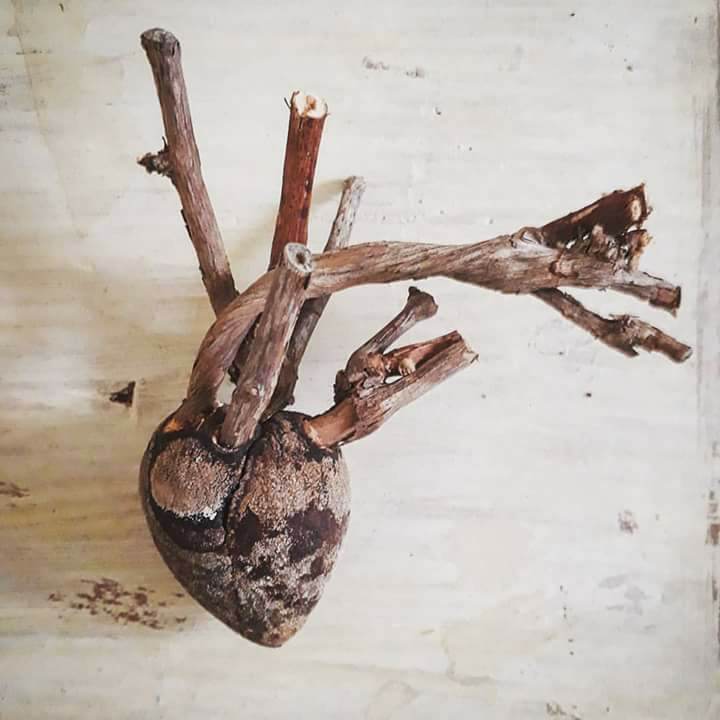
C.W: Who are the artist’s you listen to when you paint?
M.S: Oh it really depends… sometimes only the sounds around, no music. My obsession in music goes endlessly though, I could be listening to some jazz, or classical, or oud, or folk, or post-rock, or ambient, etc. but I could tell you a few who come to my mind now:
Biosphere – Set fire to flames (a side project of Godspeed you black emperor), Stars of the Lid, moving on to Billie Holiday, Charles Mingus, John Coltrane, Chet Baker, then sometimes Chopin, Vivaldi (especially interpretations by Jaroussky and Lemieux), Bach (especially played by the golden soul of Glenn Gould), Gurdjieff, Arvo Part, uhmm… Jeff Buckley, Nick Drake, Karen Dalton… of course the amazing Anouar Brahem, Nasser Shamma, Shakti, oh I could go on and on! And actually recently I made the discovery, through a very dear person to me, of Zabelle Panosian, and the album “I am a servant of your voice” was love at first listen, the textures and her voice give me shivers.
C.W: Do you have any message for the female artists in the region?
M.S: If I had a message, it wouldn’t be only to female artists, it would be to any artist in general, but then again, if he or she is an artist, who am I to give them a message?
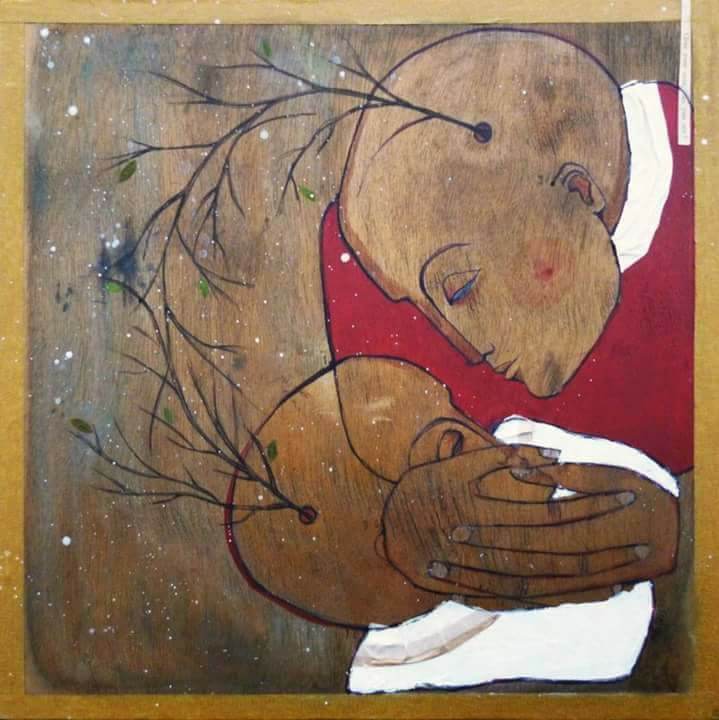
For more about the artist: http://www.instagram.com/ellazplanet
Christiane Waked is a columnist and former Press Attaché of the French Embassy to the UAE (2010-2015) also worked as linguist and analyst in the French Interior Ministry (2005-2008)


